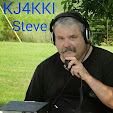You've got cool gear, and you're eager to use it. One word: Coax. I use either 18 or 50 feet of RG-8X coax, which gets the antenna clear of obstacles or leaves me a few feet if it's up high. For having the EndFedz by the radio, the 18 foot section works well usually. For having the antenna a bit farther away, or using a traditional dipole, the longer run of coax works better. Why did I pick RG-8X? Universal Radio carries it at a very affordable price, and my portable is vacation use where weight isn't really a concern. Although, I do wish Universal Radio would carry black for runs of it, instead of that dull gray. Realistically, it has a low attenuation for HF, and not as bad as smaller gauge for 6 meters (and a strong 2 meter signal if necessary). Buddipole uses 25 feet of RG-58, and a 50 foot version is optional. It is definitely lighter than RG-8X and has a bit more attenuation. Opinions vary about using it portable. I've heard hams talk who consider it CB coax and nothing else. Other hams think it is great for small, portable runs. Whatever you choose is your own personal choice. I'd certainly be willing to use a short run of it, and for backpacking, the smaller size and weight are definitely considerations. Remember dB charts are listed per 100 feet. So, 25 or 50 feet is either a fourth or half of the chart. Lower frequencies have less attenuation.
Personal comfort considerations are a major factor. I used to teach safety in a university, and it is amazing how many people go on outings with so little planning for emergencies, or comfort factors. Without going into great detail, consider these factors: Adequate clothing, with rain gear if necessary. Some food to snack on with water, sunblock or bug repellent when necessary. Sunglasses and a hat always come in handy, particularly in the summer, at altitude or around water. It is strongly suggested that you carry a small first aid kit. If you take certain medicines, such as nitro pills, insulin, an epi pen, etc. have it on hand if you think you'll need it, along with an emergency list of your family, doctor, and medications you are on. I used to backpack. You can go from having fun on a trail, to falling off of a ledge in a couple of seconds. Changes in altitudes can also affect people...even on a car drive to the top of a mountain, such as Newfound Gap in the Smokies. Temperature changes, changes in precipitation, oxygen levels, etc. can affect you. We have several Crazy Creek canoe seats, and I have an extra large Crazy Creek Chair. Very comfy... But, even a cheap piece of gardening foam pad from the garden center at Home Depot will keep your bottom warm, dry and comfortable.
About Me

- Steve, KJ4KKI
- Welcome to my little piece of the cyberworld. I am an Amateur Extra Class ham radio operator from Kentucky. In addition to ham radio, other interests include paddling kayaks and canoes, camping, flyfishing, shooting and photography...I am a major Jimmy Buffett fan (fans are known as Parrotheads). But, location, work and finances sort of got in the way of being a beach bum as a career. I am also an animal lover and have several pets. I also have a Facebook page at steve.kj4kki.
No comments:
Post a Comment